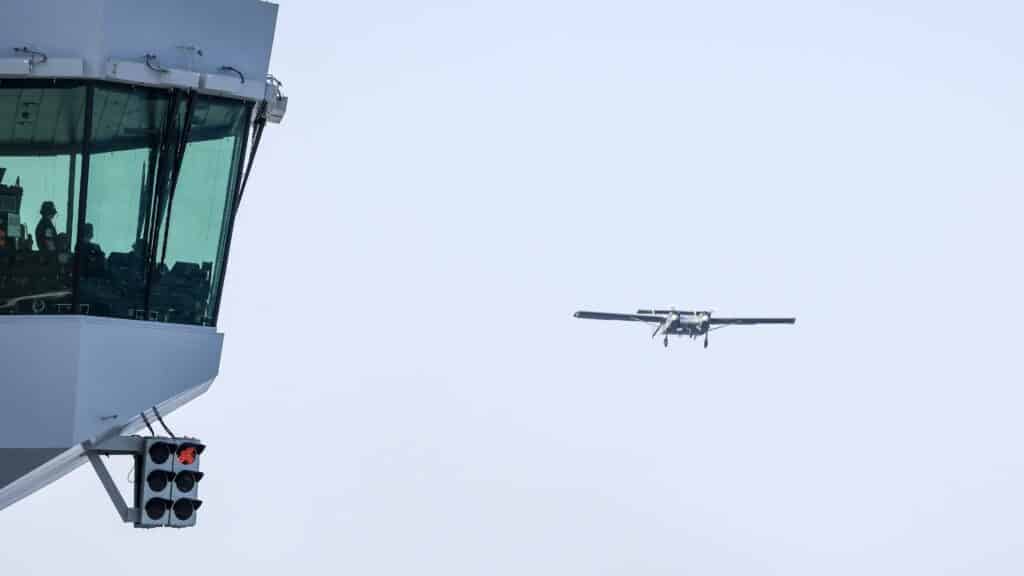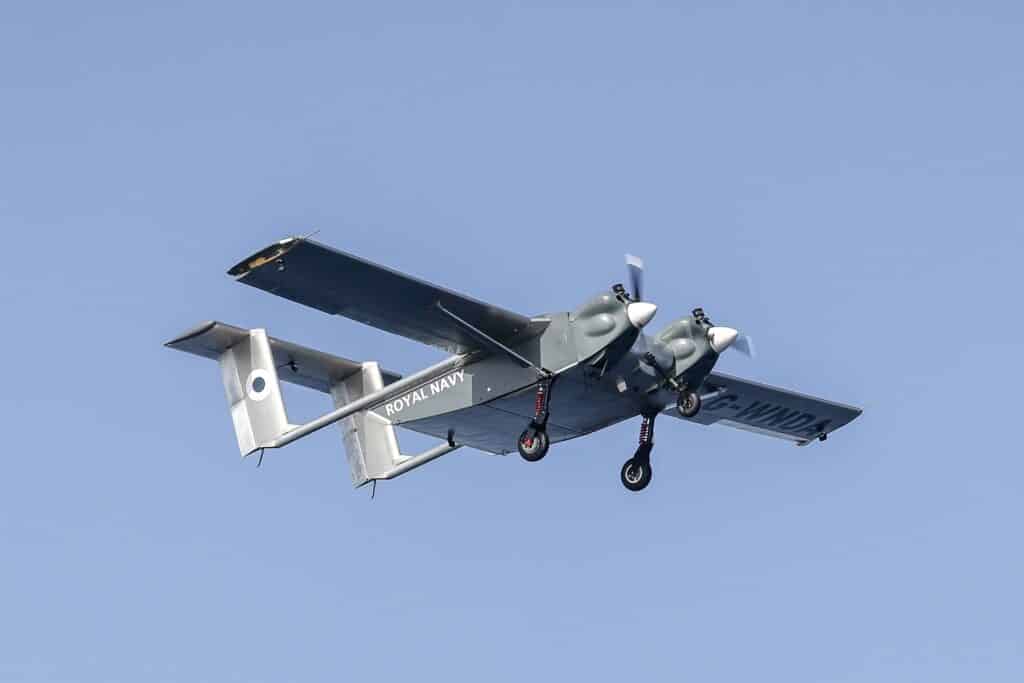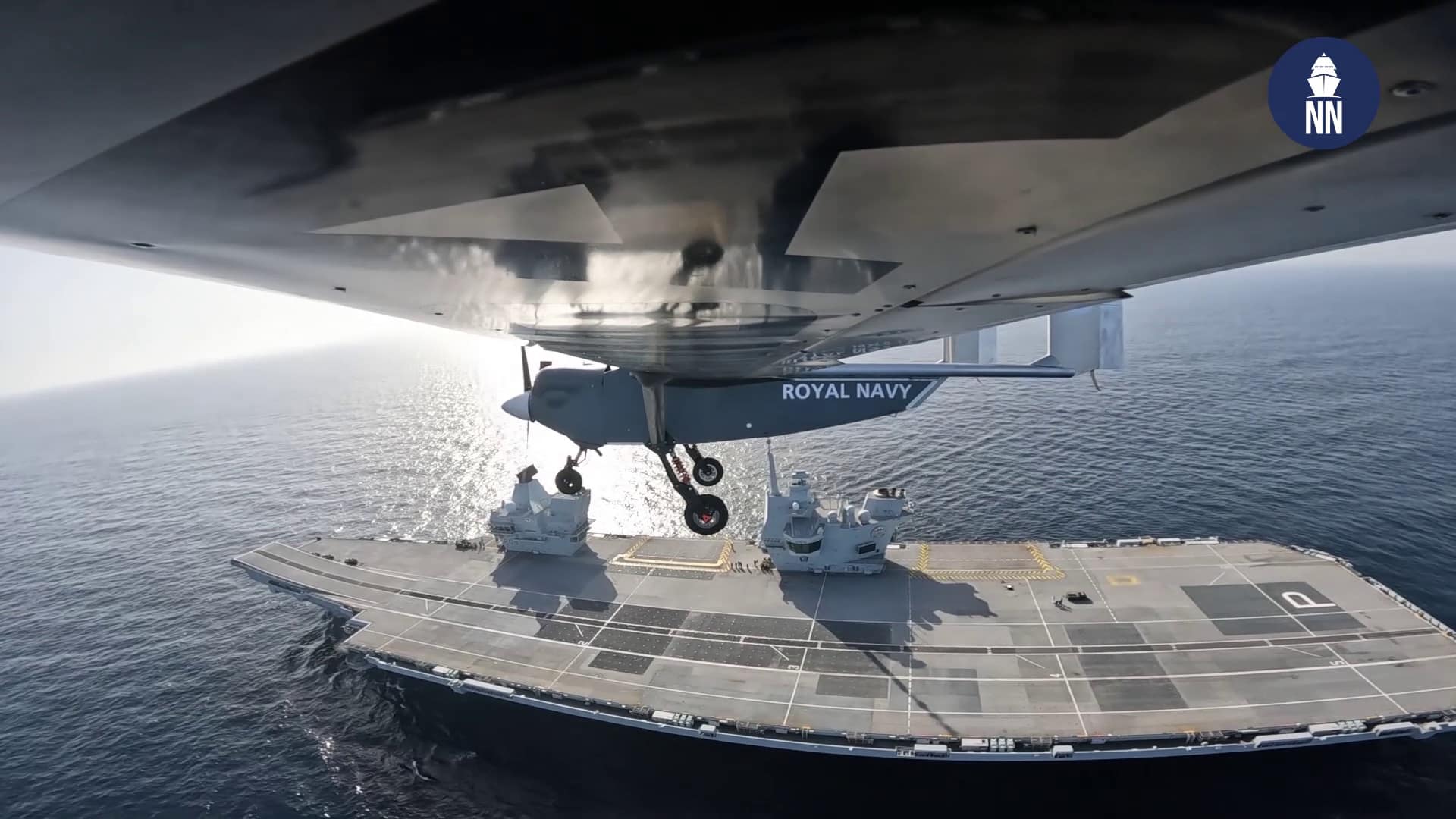Royal Navy UAS Trial Demonstrates Carrier Operations Capability
The UK Royal Navy (RN) has flown an uncrewed air system (UAS) onto and off an aircraft carrier for the first time. The successful trial demonstrated new capability for the navy and a new approach to procurement.
Dr Lee Willett 08 Sep 2023
UAS trials reflects Royal Navy’s focus on new procurement approaches
The UAS – developed and built by W Autonomous Systems (WAS) – flew from Predannack airfield (part of Royal Naval Air Station Culdrose) on Lizard Peninsula, southwest UK, to the Queen Elizabeth-class carrier HMS Prince of Wales, operating offshore. The UAS delivered its payload, and returned to Predannack.
The WAS HCMC twin-engine heavy-lift UAS can carry a 100 kg payload at ranges up to 1,000 km. To launch and land, it needs a 150 m runway, which will be found at a shore base or onboard a carrier. Its flight operations are supported by an autopilot system.
In an 8 September press statement, the RN noted that its UAS capability development programme has twin aims: developing capacity to re-supply carriers at sea with food, spares, and other stores, without using crewed helicopters; and taking initial steps in building safe integration when operating uncrewed aircraft from RN platforms that also operate crewed aircraft.

In the statement, the carrier’s commanding officer Captain Richard Hewitt said “Prince of Wales is a fifth-generation aircraft carrier, and operating autonomous drones like this will become the norm across future RN carrier strike groups in our 50-year lifespan.”
Prince of Wales has hosted UAS trials before, including operating Banshee remotely piloted air systems and small ‘quadcopter’ aircraft. The trials off the Lizard are in a different league, involving a much larger (ten-metre wingspan), more capable pilotless aircraft.
“This is a pivotal moment for the Fleet Air Arm (FAA),” Lieutenant Commander Mike Anderson, the navy’s Deputy Force Commander Maritime Uncrewed Air Systems and Fixed-Wing Force, told Naval News in an interview on 7 September. “This is absolutely a key point in where the FAA will go in the future.”
The RN is developing its air-based capability plan under the Future Maritime Aviation Force (FMAF): this programme assesses the role for UAS and the crewed/uncrewed aircraft mix.

“The FAA’s future under FMAF is to look in the short term at how we can use uncrewed systems: how can we use those at the moment to augment and support our crewed flights; and how we maximise technology to move forwards,” said Lt Cdr Anderson.
“We’re looking at how can we efficiently make use of this technology to provide better capability at sea,” he said. “The UAS project fits within FMAF as looking primarily at the ability to resupply our ships at sea …. It [also] allows us to free up crewed aviation to focus on its core tasking.”
Looking further forward, while requirements timescales are still being defined, Lt Cdr Anderson said RN UAS use will increase over the next five to 10 years, adding that systems are already deployed on operations.
The trial reflected the reality that, while the RN seeks increased autonomy in UAS operations, the requirement remains to maintain a ‘human in the loop’, Lt Cdr Anderson explained. The carrier will be constantly moving in congested waters and in changing weather and sea states – in routine operations, nevermind when conducting tactical activities. Consequently, the UAS used a combination of autonomous and remote-controlled flight. The UAS took off from and landed back at Predannack, and transited most of the round-trip, flying autonomously. Remote operators ashore and at sea guided the aircraft on approach to, landing on, and launching from the carrier. Remote operation did not involve using a joystick for ‘hands on’ guidance, but instead a laptop to send (for example) direction or height requirements to the UAS, said Lt Cdr Anderson.

The trial, the capability development process, and the transformative impact UAS capability offers also underline wider RN efforts to transform its acquisition approach.
“What we’re looking at is how we can be more agile with our acquisition processes,” said Lt Cdr Anderson. This perspective was demonstrated in the WAS UAS’s selection via the ‘Heavy Lift Challenge’ programme, he explained. The programme is opened up regularly for companies to demonstrate a system that might meet RN requirements. The WAS UAS emerged from the first Challenge as a technology with sufficient maturity to undertake the trial. With its capability demonstrated, including in the trial, the RN and WAS are now collaborating on its further development.
More broadly, Lt Cdr Anderson explained, “We’re effectively looking to come up with a catalogue of requirements that enable us to pick and choose which systems we want to use for a particular task for a particular ship in a particular area, without having to go through the whole procurement process.” “It’s not as quick as being able to go and pick a car you would like – but it’s certainly a lot faster than we have seen before with this particular technology,” he added.

Video: Royal Navy Tests Cargo UAS Aboard Aircraft Carrier - Naval News
The UK Royal Navy has flown an uncrewed air system (UAS) onto and off aircraft carrier HMS Prince of Wales for the first time.



